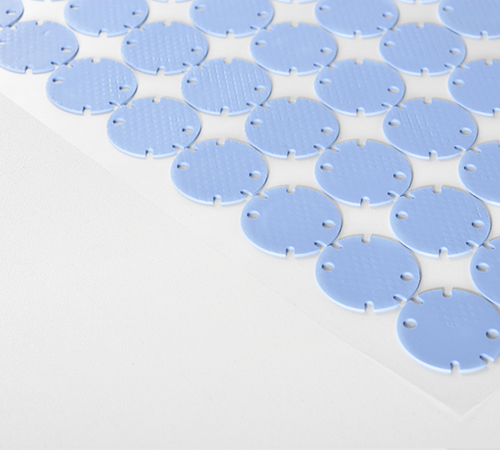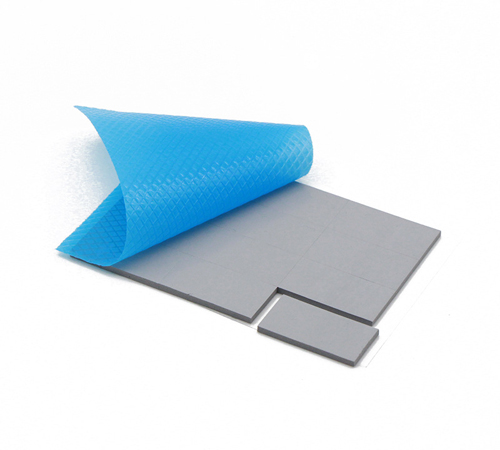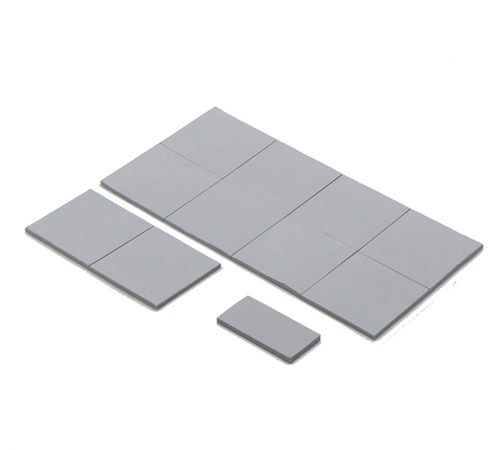Thermal conductive pads, as widely used thermal management materials, play an essential role in heat dissipation for electronic devices. However, the question of whether thermal conductive pads can be stacked has always been a topic of discussion within the industry. NFION Thermal will delve into the feasibility, influencing factors, and practical considerations of stacking thermal conductive pads to provide a scientific and rigorous reference for professionals in the field.
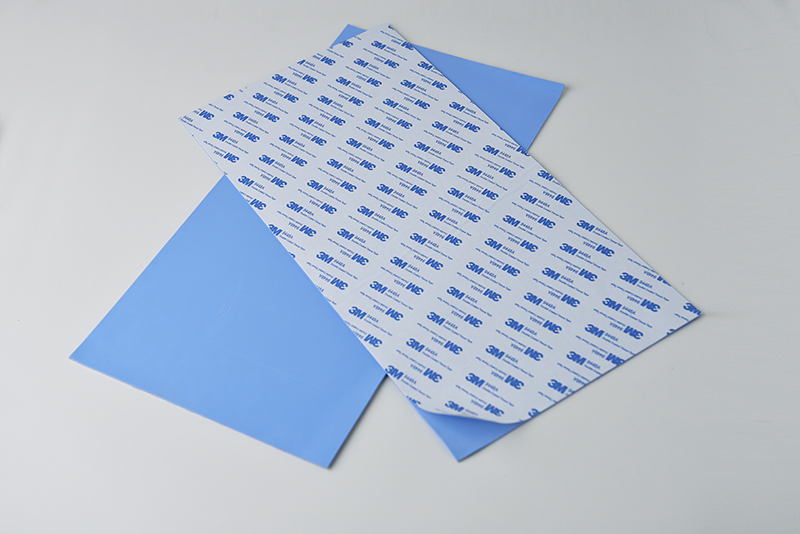
Basic Characteristics and Working Principle of Thermal Conductive Pads
Thermal conductive pads are flexible thermal materials made of a silicone matrix with thermal fillers such as aluminum oxide, boron nitride, etc. Their primary function is to fill the small gaps between heat-generating components and heat sinks, reducing thermal resistance and improving heat dissipation efficiency. Thermal conductive pads have good flexibility, compressibility, and high/low temperature resistance, allowing them to perform stably under various complex conditions. The thermal conductivity mainly depends on the internal heat conduction paths within the material, with the type, content, and distribution of the fillers significantly affecting the thermal conductivity.
Theoretical Analysis of Stacking Use
Based on the basic principles of heat conduction, the thermal resistance of a thermal conductive pad is proportional to its thickness and inversely proportional to its thermal conductivity. In theory, stacking thermal conductive pads will increase the overall thickness, thus increasing the thermal resistance. According to the formula Rth = d/kA (where Rth is thermal resistance, d is thickness, k is thermal conductivity, and A is the contact area), the thermal resistance of stacked pads (Rth,stack) can be expressed as:
Rth,stack = Rth,1 + Rth,2 = d1/kA + d2/kA = (d1 + d2) / kA
Therefore, the thermal resistance of the stacked pads is simply the sum of the individual thermal resistances. This indicates that, under unchanged conditions, stacking thermal conductive pads will decrease heat dissipation efficiency. From the perspective of thermal resistance, stacking is not an ideal choice.
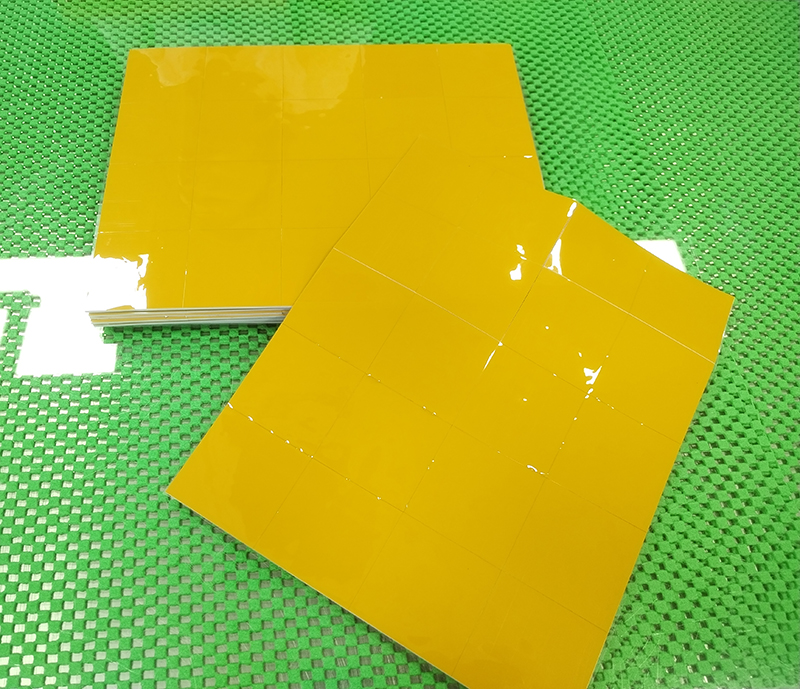
Influencing Factors in Practical Applications
While theoretical analysis shows that stacking increases thermal resistance, in practical applications, several other factors need to be considered.
(1) Contact Pressure and Interface Thermal Resistance
The performance of thermal conductive pads depends not only on their material properties but also on the contact pressure. In real assembly, insufficient contact pressure can lead to air gaps between the heat-generating components and the heat sink, increasing interface thermal resistance. Stacking thermal conductive pads can, to some extent, compensate for insufficient contact pressure, improving material contact with the surfaces of the heat-generating components and heat sink, reducing air gaps, and lowering interface thermal resistance. For example, in large electronic devices where the contact area between the heat sink and the heat-generating component is large, a single thermal conductive pad may not provide enough pressure. In such cases, stacking can improve the contact.
(2) Material Consistency and Reliability
Different batches or brands of thermal conductive pads may have variations in thermal conductivity, flexibility, compressibility, and other properties. Stacking pads with different performances may lead to uneven heat conduction or even local overheating. Therefore, when stacking, it is crucial to ensure the consistency of the materials used. Additionally, stacking could affect the long-term reliability of the material. Multi-layered materials may experience stress during thermal expansion and contraction, leading to delamination or damage, which affects heat dissipation performance. Thus, when considering stacking, the thermal expansion coefficients of the materials should be matched to ensure stability during long-term use.
(3) Heat Dissipation System Design Requirements
In some specialized heat dissipation system designs, stacking thermal conductive pads may have unique advantages. For instance, in high-power density electronic devices, there may be significant temperature differences across the surface of the heat sink. By carefully designing the stacking of thermal conductive pads, heat can be distributed more evenly, preventing localized overheating. Furthermore, in cases requiring multi-layered heat dissipation structures, stacking thermal conductive pads can work synergistically with other thermal materials (such as thermal graphite sheets, heat pipes, etc.) to form an efficient heat dissipation system.
Practical Application Suggestions
Considering the above analysis, stacking thermal conductive pads is not absolutely infeasible, but in practical applications, the following points should be carefully considered:
(1) Prioritize Single-Layer Use Optimization
When designing heat dissipation solutions, prioritize optimizing the thickness, thermal conductivity, and contact pressure of a single layer of thermal conductive pad to improve heat dissipation efficiency. Stacking should only be considered when a single layer is insufficient for heat dissipation needs and after thorough evaluation.
(2) Ensure Material Consistency
If stacking is chosen, ensure the thermal conductive pads come from the same batch or have identical performance specifications. It is also recommended to test the thermal resistance of the stacked materials to verify their actual heat dissipation performance.
(3) Design the Stacking Structure Reasonably
When stacking, the structure should be designed according to the heat dissipation system's requirements. For example, adjusting the number of layers and changing the stacking direction can optimize the heat conduction path. Also, care should be taken to avoid stress concentration caused by stacking to ensure long-term reliability.
(4) Consider the Heat Dissipation System Design
The stacking of thermal conductive pads should be integrated with the overall heat dissipation system design. In high-power density or complex heat dissipation scenarios, thermal conductive pads can be combined with other heat dissipation materials to form a multi-layer, multi-dimensional heat dissipation solution.
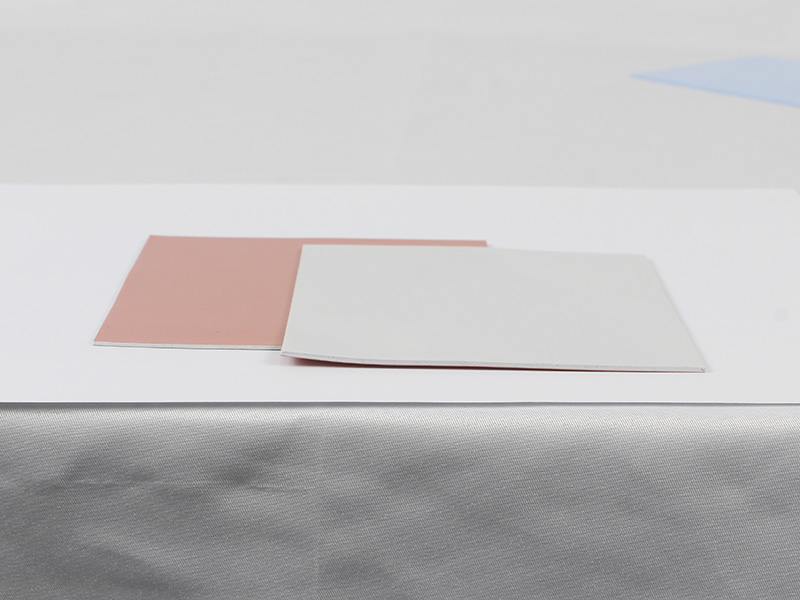
Conclusion
The stacking of thermal conductive pads is a complex issue and cannot be simply answered as "yes" or "no." From the perspective of thermal resistance, stacking will reduce heat dissipation efficiency. However, in practical applications, through reasonable design and optimization, stacking can improve heat dissipation to some extent. Therefore, in practical applications, the decision to stack thermal conductive pads should be carefully considered based on specific heat dissipation needs, system design, material characteristics, contact pressure, reliability, and other factors. Only through scientific, rigorous analysis and verification can the performance of thermal conductive pads be fully utilized, ensuring the stable operation of electronic devices.



 CN >
CN >
